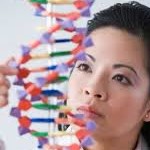Adaptive data analysis
In “The reusable holdout: Preserving validity in adaptive data analysis” published in Science researchers Cynthia Dwork, Vitaly Feldman, Moritz Hardt, Toniann Pitassi, Omer Reingold, Aaron Roth addresses the issue of data analysis adaptivity.
Applying thumb rules such as the same 5% significance test many learn when introduced to scientific method at school sometimes corroborate misleading ‘discoveries’. Data analysis often enough is made through a re-interpretation of statistics. So that conclusions carry much of our models and how we interpret raw data in the first place.
Author Moritz Hardt posted an interesting introduction to the paper in Google Research Blog.
does objectivity help creativity?
in “Stop Trying To Be Creative” CHRISTIE ASCHWANDEN brings testimony of a less structured find of creativity.
Having defined objectives might actually be driving you out of the path to creative solutions.
ATCG not enough for good DNA?
In “Structural Basis for a Six Nucleotide Genetic Alphabet” published at the Journal of the American Chemical Society researches propose adding a couple of letters.
“Z” and “P” would contribute to the classic double helix structure with similar flexibility and rigitdy. Paper states that this would integrate well with current ‘conventional’ pairs. An ATCGZP DNA could evolve and take a life of its own. Literally. Including evolution and all its unforeseen consequences.
In theory, having an enriched set of building blocks would increase the possibility of creating new proteins and thus potentially useful for medial and scientific purposes. Perhaps one advantage is that such proteins (and other biochemical structures) is the fact that they would be easily marked and spotted as distinguished elements.
“The First Energy Revolution — Tesla Energy Changes Everything” by Ken Trough
From Cleantechnica:
“(…) We all know the world runs on energy, but we’ve been conditioned over the last couple of generations to see energy as something that requires careful conservation and conscious usage.
(…) Power conservation has only been necessary because the vast majority of our energy needs have been, up until now, either provided by non-renewable resources (like coal or other fossil fuels), or by resources with considerable negative environmental risks (like nuclear power). Remove the downside of energy production, build out a decentralized green power generation network with more capacity than is required, and you remove the necessity to conserve power at all. (Of course, until it is really built out, conservation is very important to keeping our emissions down and stopping global warming.)
(…) Of course, harnessing all that free solar power for our use is easier said than done. (…)
Aren’t Battery Systems Old News?(…)
Our past energy paradigm was largely based on central power generation (…) Tesla Energy’s stationary battery systems support a decentralized power generation architecture.(…)
This is the key fundamental enabling technology that solar power has been waiting for. (…) No longer will the “energy conservation” paradigm rule our thinking and limit our growth. Once the artificial scarcity of power production based on fossil fuels is removed, we will see a revolutionary transformation of our society and the world at large.(…) ” read full article
reading list: Woody Allen
“The World of S.J.Perelman” by S.J. Perelman
 – Woody Allen’s interview
|
|
“Elia Kazan: A Biography” by Richard Schickel
 – Woody Allen’s interview
|
|
“Epitaph of a Small Winner” by Machado de Assis
 – Woody Allen’s interview
|
|
“Catcher in the Rye” by J. D. Salinger
 – Woody Allen’s interview
|
|
“Really The Blues” by Mezz Mezzrow
 – Woody Allen’s interview
|
It seems we can’t find what you’re looking for. Perhaps searching can help.




